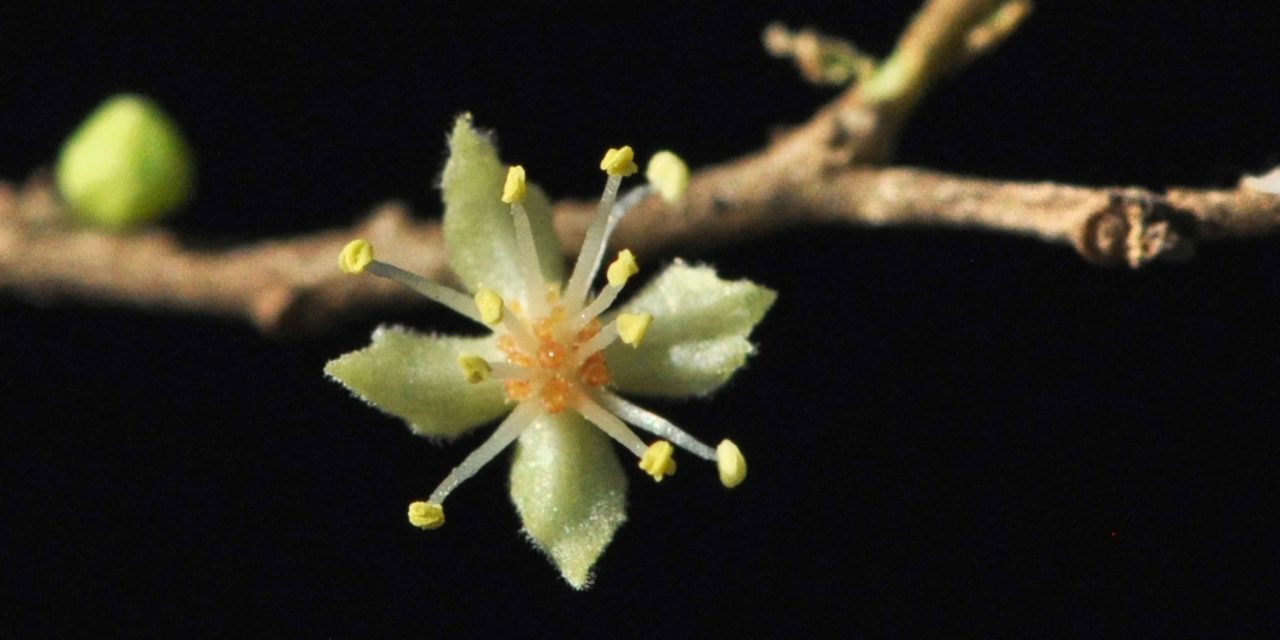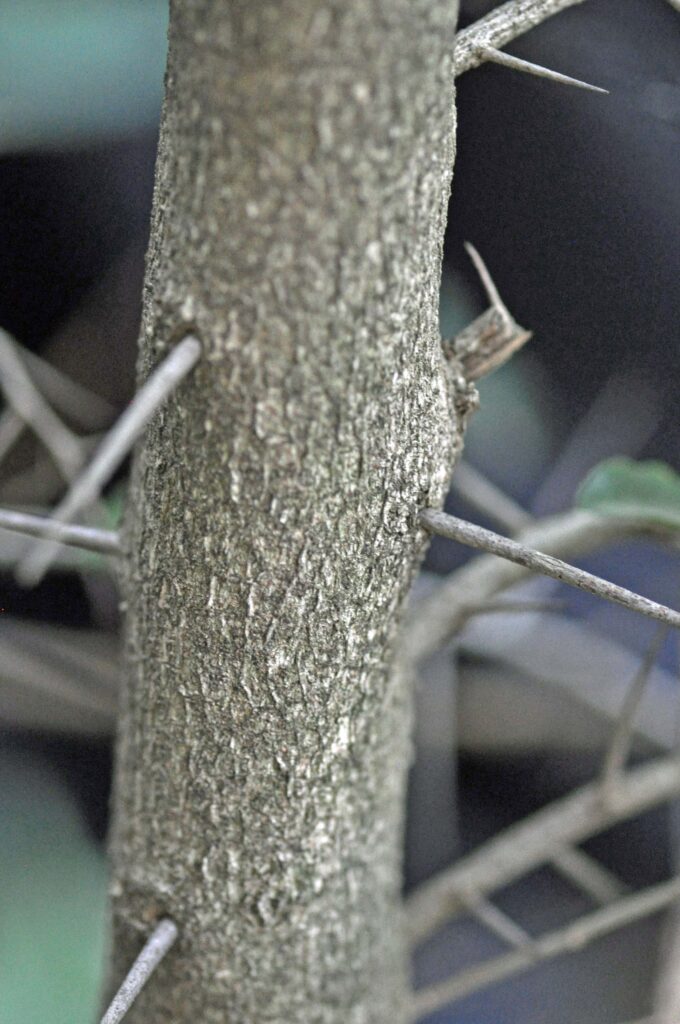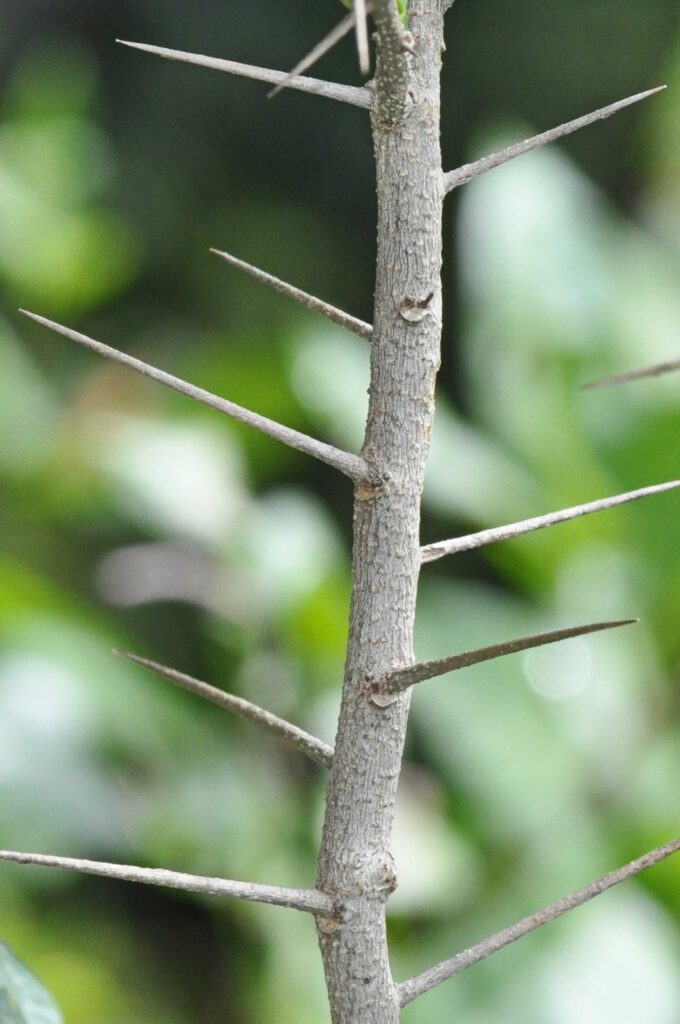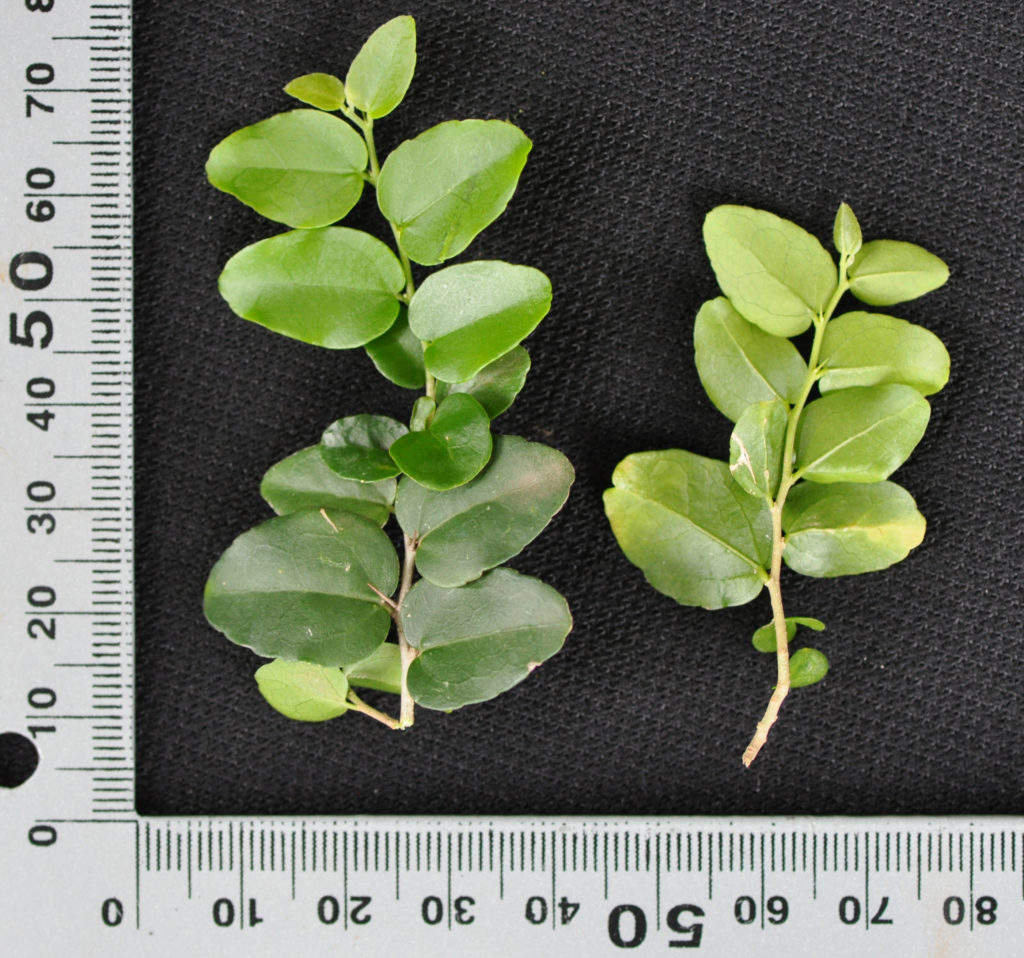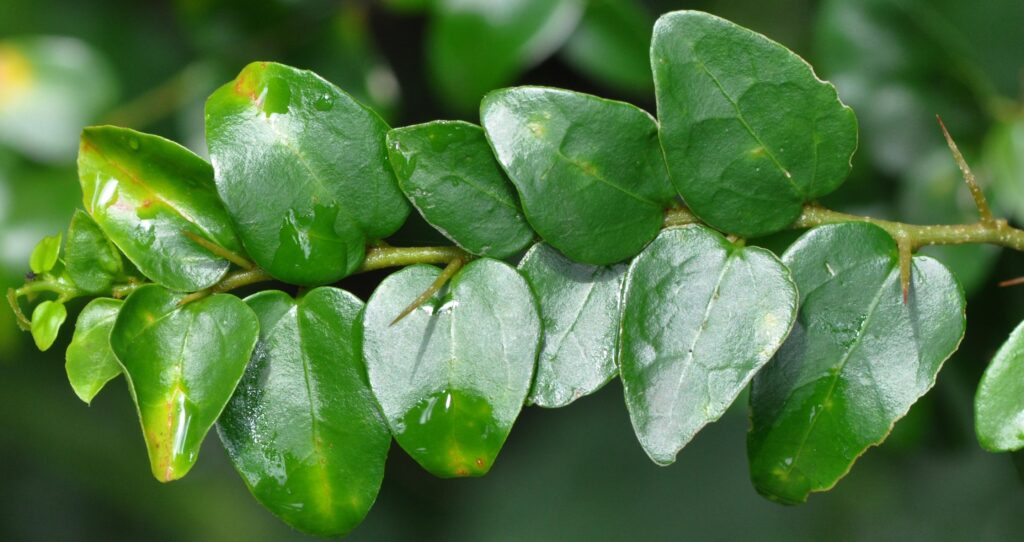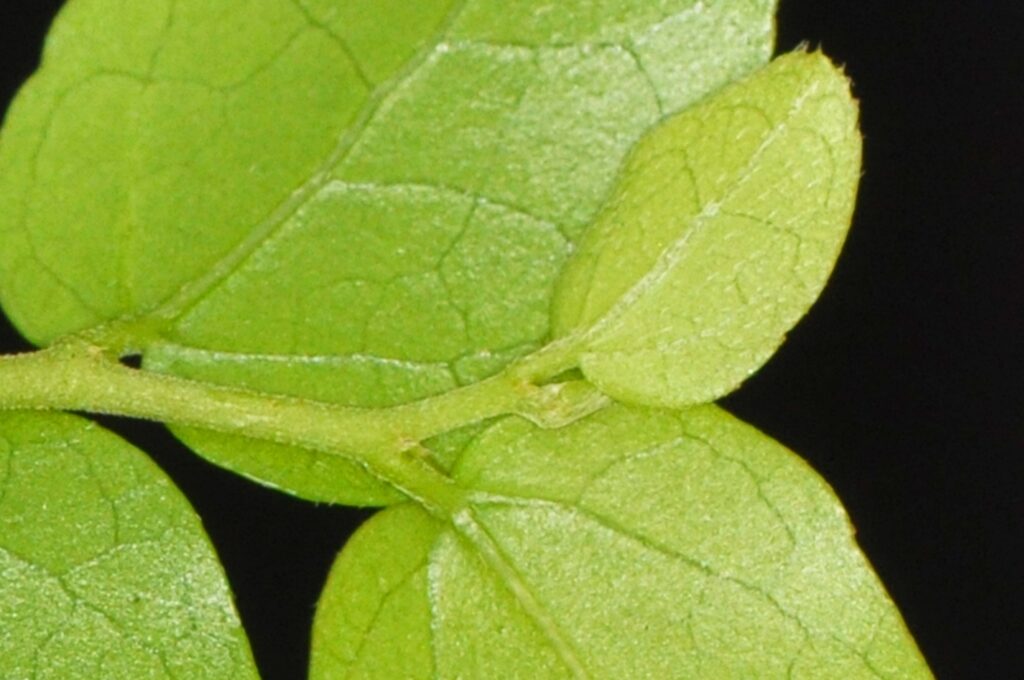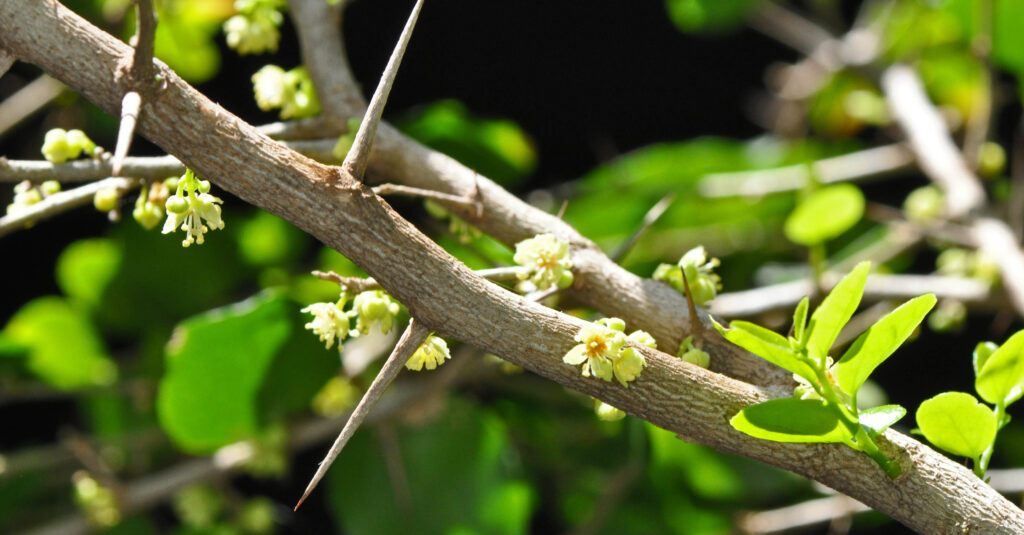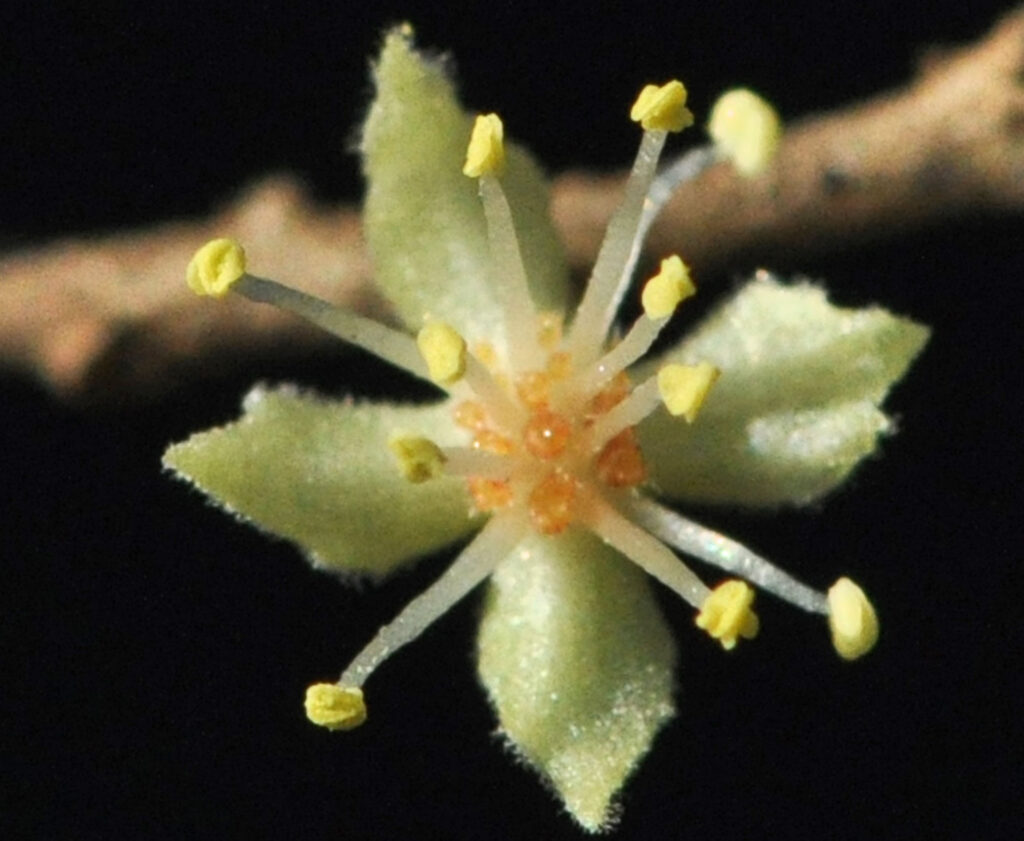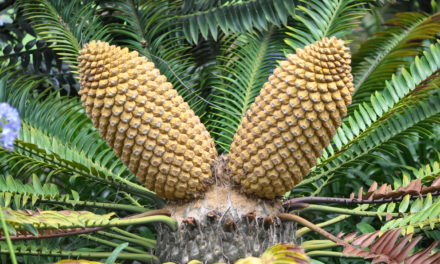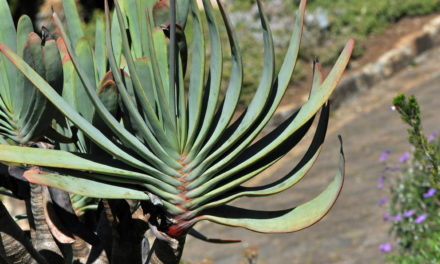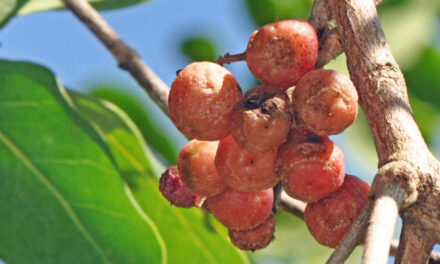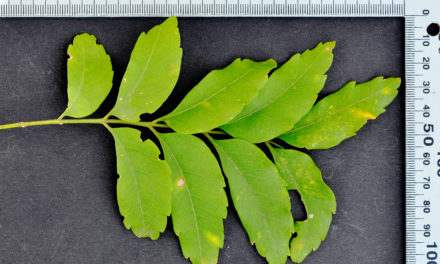General Info – summary
The small, dioecious Tree + a slender trunk with long sharp single spines & smooth bark + lenticels. The small shiny simple Leaves lack stipules, have 3-5 veins arising from the base. Tiny greenish, regular, 4-merous pedicellate Flowers have deeply lobed calyx & lack petals. Male flowers have protruding stamens. Female flowers have a superior ovary and a channelled style. Fruit is a fleshy berry with elliptic seeds.
Description
Dovyalis rhamnoides
Previous Names: Dovyalis zizyphoides.
SA Tree No. 509.
Common names: (Afr) Appelkoos, Gewone Suurbessie, Kei Suurbessie, Suurbessie, Wynbessie. (Eng) Cape Cranberry, Common Sourberry, Crownberry, Small Kei-apple, Sourberry, Sourberry Kei-apple, Wild apricot, Wine berry. (siSwati) Umabambanane. (isiXhosa) Umqaqoba, Umqokolo. (isiZulu) Umkhamgwinqi, Ukhanginqi.
Family: Salicaceae: (Willow family – includes the exotic poplar trees (genus Populus), willows, aspen, and cottonwoods). The family Salicaceae has recently been expanded and includes 55 genera and 1 000+ species. Trees may be deciduous or evergreen. Simple, alternate and stipulate Leaves may have serrate or dentate margins – in which case toothed margins all have veins entering each tooth. The bark often contains Salicin (a bitter alcoholic glucoside related to aspirin). This glucoside can be used as an anti–inflammatory. However, it may cause a skin allergy. Flowers may be dioecious to hermaphrodite and occur in inflorescences (catkins with stamens in male flowers and carpels in female flowers). A normal perianth may be absent. A bract subtends each flower. There are 2 to many Stamens with long filaments. The superior Ovary has 2-4 carpels. Flowers are wind pollinated. Fruit is variable with many small, wind dispersed Seeds. Local genera on this website include Dovyalis, Oncoba, Salix and Scolopia.
Name derivation: Dovyalis – spear (Greek) referring to the spines. rhamnoides – referring to the shiny leaf – like Rhamnus prinoides. There are 6 species of the genus Dovyalis in southern Africa.
Conservation: National Status: L C. (Least Concern). Assessment date: 2005 (W. Foden and L. Potter).
Tree
This rigid, spiny shrub or small, slender Tree may reach 7m high. The Stem (main axis of the plant, the leaf and flower bearing as distinguished from the root-bearing axis) is usually up to 11cm wide. The relatively smooth Bark is initially greenish grey-white and hairy. The bark becomes brown, slightly ridged and fissured with age (photo 296). The branches have thin, single, straight, pail and sharp Spines that are up to 8cm long (photo 457). Young slender, pale grey branches are hairy and have visible Lenticels (usually raised corky oval or elongated areas on the plant that allows the uncontrolled interchange of gases with the environment – photo 457).
- 296. 2015/10/13 Walter Sisulu NBG. Photo: David Becking.
- 457. 2014/02/25 Walter Sisulu NBG. Photo: David Becking.
Leaves
The smallish, simple, waxy, shiny evergreen and alternate Leaves (photo 456) are arranged in an almost horizontal plane (photo 301). They are oval to ovate (shape of an egg with the widest point closest to the petiole (photo 301) to elliptic and up to 4,5 x 3cm. Larger leaves are usually found on coppice shoots (young tree stems are repeatedly cut/burned down to near ground level may cause regrowth from the stump or roots). The Upper surface becomes dark green, and the Lower surface is a lighter green. The Apex is bluntly pointed, tapering or round (photo 456) and the leaf Base is usually rounded, square or cordate (heart shaped – photo 456). There are 3-5 distinct Veins arising from the base (photo 804) that are more visible below. The Lateral veins are more visible below (photo 804). The Spines may emerge close the leaf bases (photo 456). The Blade is thinnish, hairy only when young, and becomes smoother with age. The Midrib is clearer below and may be situated to one side. The Margin may be wavy and entire (with a continuous margin, not in any way indented) or obscurely toothed. The Petiole (leaf stalk) is short: 2-3mm long (photo 301). Stipules (basal appendages of the petiole) are absent.
- 301. 2016/02/23. Walter Sisulu NBG. Photo: David Becking.
- 456. 2017/02/07. NBG. Photo: David Becking.
- 804. 2017/02/07. NBG. Photo: David Becking.
Flowers
The plants are dioecious (unisexual floral structures with male and female parts on separate plants). The tiny, creamy green Flowers (photo 344) are actinomorphic (Regular, symmetrical. Flowers are vertically divisible into similar halves by more than 1 plane passing through the axis). All flowers have Pedicels (stalks of a single flower) that supports the hairy Calyx (photo 627) which has 4 deeply lobed sepals (photo 627). The Corolla is absent (no petals). The Male flowers are in branched, condensed axillary clusters located in leaf axils. Here there are many protruding Stamens (photo 627). The bilocular Anthers dehisce through longitudinal slits. The bases of the Filaments are surrounded by sparsely to densely hairy, orange Nectaries (photo 627), which form a honeycomb structure at their base. Small, hairy scale-like bracts surround the base of the pedicels. The Female flowers occur singly or in clusters of 2-3 – each on a slender pedicle. A lobed Disc (a more or less fleshy or elevated development of the receptacle) is present. The Ovary is superior, and the Styles are channelled. (Jun-Sep).
- 344. 2015/09/15. Walter Sisulu NBG. Photo: David Becking.
- 627. 2019/09/18. Walter Sisulu NBG. Photo: David Becking.
Fruit
The oval Fruit is a fleshy Berry (pulpy, indehiscent fruit like a grape or tomato) about 1,3 x 1cm that turns from green to bright orange or red when ripe. This berry is fleshy and has the remains of a persistent Style. The hairy persistent sepals within the Calyx are accrescent (increasing in size after flowering). Petals are absent. Fruiting is erratic and does not happen each year. The 2-3 slightly woolly Seeds are elliptic and imbedded in a fleshy pulp. (Oct-Feb).
Distribution & Ecology
This is a forest (usually well below the canopy) and bushveld (a sub-tropical woodland ecoregion of southern Africa) growing plant. Plants are located from the coast and inland up to an altitude of about 1 700m. In South Africa, they occur from Knysna in the Western Cape, Eastern Cape, KwaZulu-Natal, Mpumalanga and Limpopo. Beyond South Africa they occur in Eswatini (Swaziland) and southern Mozambique – including Inhaca Island. They are thus Endemic (restricted to a particular geographic location) in southern Africa. The larva of the Forest Leopard or African Leopard Fritillary butterfly (Phalanta eurytis eurytis) feed on these Leaves and those of other Dovyalis and Salicaceae sp. The presence of Spines makes this plant a good nesting place for birds.
Ethnobotany
The pleasant and acidic flavoured Fruit is edible and used to make vinegar, good jelly, preserves and brandy. This plant Grows well from both seeds and cuttings. Unfortunately, it does not produce fruit on a yearly basis and both male and female plants are necessary for fruit development. If fruit is required use cuttings from soft male and female stems to ensure both male and female plants develop. The Fruit attracts insects and birds. The relatively dense Wood is close-grained, light yellow, hard, crooked and tough. In the past it was used for making ox-yokes. Some implement handles and craftwork use the wood. The plant makes a good windbreak. Local medicine makes some use of various plant parts.
References
Boon, R. 2010. Pooley’s Trees of eastern South Africa. Flora and Fauna Publications Trust, Durban.
Burrows, J.E., Burrows, S.M., Lotter, M.C. & Schmidt, E. 2018. Trees and Shrubs Mozambique. Publishing Print Matters (Pty) Ltd. Noordhoek, Cape Town.
Coates Palgrave, M. 2002. Keith Coates Palgrave Trees of Southern Africa, edn 3. Struik, Cape Town.
Foden, W. & Potter, L. 2005. Dovyalis rhamnoides (Burch. ex DC.) Burch. & Harv. National Assessment: Red List of South African Plants version . Accessed on 2024/12/03.
Lawrence, G. H. M, 1951. Taxonomy of Vascular Plants. The Macmillan Company, New York. Tenth Printing 1965.
Palmer, E. & Pitman, N. 1972. Trees of southern Africa. Balkema, Amsterdam, Cape Town.
Schmidt, S. Lotter, M. & McCleland, W. 2002. Trees and Shrubs of Mpumalanga and the Kruger National Park.
van Wyk, B. & van Wyk, P. 1997 Field guide to Trees of Southern Africa. Struik, Cape Town.
Woodhall, S. 2020. Field Guide to Butterflies of South Africa, edn 2. Donnelley, RR, China.
http://www.plantzafrica.com/plantcd/dovyalisrhamnoides.htm
https://en.wikipedia.org/wiki/Inhaca_Island#Flora
http://www.digplanet.com/wiki/Phalanta_eurytis
http://posa.sanbi.org/flora/browse.php?src=SP

